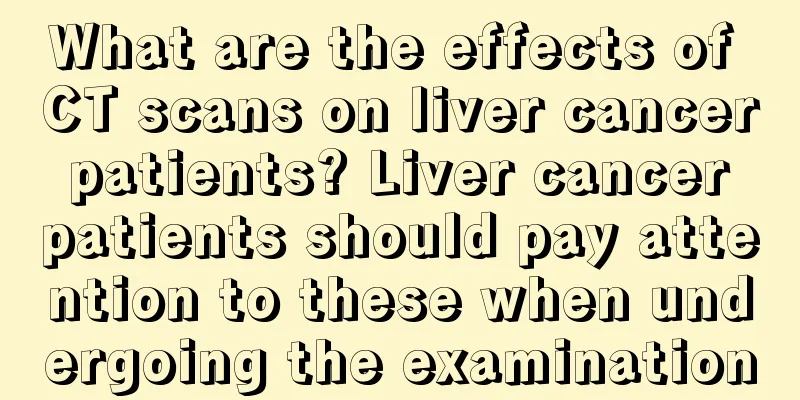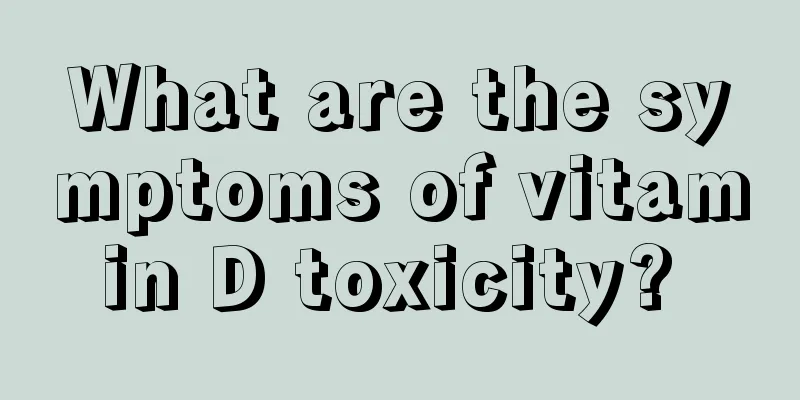What are the effects of CT scans on liver cancer patients? Liver cancer patients should pay attention to these when undergoing the examination

|
What are the effects of CT scans for liver cancer patients? Liver CT is a type of CT examination, which can assist in the treatment of liver cancer. When treating liver cancer, it is inevitable to do a liver CT scan. So, what is the specific effect of CT scans on liver cancer? Let's take a look at it together. The role of CT scan in liver cancer CT examination can clearly show the size, number, shape, location, boundary, richness of blood supply of liver cancer, and its relationship with the intrahepatic ducts. It has important diagnostic value for whether there are tumor thrombi in the portal vein, hepatic vein and inferior vena cava, whether there is metastasis in the portal and abdominal lymph nodes, and whether liver cancer has invaded adjacent tissues and organs. CT can also determine the severity of liver cirrhosis by showing the shape of the liver, the size of the spleen, and the presence or absence of ascites. Fast spiral CT can complete the scan of the entire liver in one breath-hold (about 20 seconds), which can avoid the up and down movement of the layers caused by respiratory movement and the omission of small lesions, and can also overcome the problem of artifacts caused by respiratory movement. Spiral CT can perform thin-layer scanning with a minimum layer thickness of 1mm, and the detection rate of small liver cancers of 1 to 3cm can reach 90%, and high-quality three-dimensional image reconstruction can be performed within the length of the spiral scan. For liver cancer that is difficult to make a clear diagnosis with enhanced CT, angiography CT can be further used. The contrast agent is injected into the hepatic artery through a percutaneous catheter, and the CT when the hepatic artery is developed is called CT angiography. Symptoms of liver cancer CT scan Size: It is difficult to detect lesions with a diameter of <1 cm on plain scan; Number: Most are single, but some are multi-focal; Location: Most common in the right lobe, followed by the left lobe, and less common in the caudate lobe. A few lesions are pedunculated, protruding outside the liver, and difficult to locate. Morphology: Most of them are round or oval, and they are irregular in shape when the lesions grow invasively; Boundary: Tumors with expansive growth tend to compress surrounding tissues to form a pseudocapsule, presenting a halo sign; tumors with infiltrative growth have blurred boundaries; Density: The vast majority of lesions show low density on plain scans, and changes in density are related to the degree of differentiation, size, and underlying liver lesions of the lesions. Well-differentiated lesions tend to show equal density, while large tumors tend to be necrotic and low-density; lesions may show low density when there is fatty liver; very few lesions show high density due to bleeding or calcification. Finally, let’s take a look at the precautions for doing CT scans for liver cancer. Things to note when doing CT scans for liver cancer There are many types of CT scans. Not all CT scans require fasting. They can be done on the lungs, mediastinum, chest wall, head, neck, retroperitoneum, pelvis, spine, and limbs. So whether to fast for CT scans cannot be generalized. It depends on the specific examination items. If it is the abdomen, you cannot eat. You cannot eat for blood tests, so as not to affect the accuracy of the examination. There are no special requirements for CT scans of the head and limbs; an upper abdominal CT scan requires fasting, and requires drinking about 300 ml of water before the examination to fill the stomach, and fasting can fill the gallbladder; if a full abdominal intestinal CT scan is done, not only is it necessary to fast, but also bowel preparation and drinking contrast agent before the examination. The contrast agent is mixed with 1000 ml of water, and 500 ml is drunk the night before the examination, and the remaining 500 ml is drunk around 6 am on the day of the examination; if angiography and enhanced scanning are done, because contrast agents are injected intravenously, the contrast agents may cause side effects such as vomiting, so try to fast as much as possible. However, patients undergoing coronary artery angiography can eat a small amount of liquid food, because if they do not eat, they may suffer from palpitations due to hunger, causing a faster heart rate and increased imaging artifacts. Liver CT scan is very important. |
<<: What are the symptoms of lung cancer? 5 symptoms of lung cancer are more obvious
Recommend
What harm does acetone do to the human body
Acetone is a chemical product generally used in i...
What are the types of yam
In people's daily life, yam should be eaten f...
What is the detoxification time for each organ in the body?
The human body has its own detoxification system ...
What kind of fish is good for people with brain cancer?
Cancer patients should pay attention to their dai...
How can I train my chest muscles?
Having strong pectoral muscles is a symbol of a s...
I woke up with tinnitus in one ear in the morning_My ears were buzzing after I woke up
Any abnormality in any part of our body will be v...
The cure rate of pancreatic cancer
In early 2016, Keigo Takeda, who was very famous ...
Where is the hospital that specializes in treating bile duct cancer
Due to various reasons, in modern society, cancer...
Why is there gas after sex?
During sexual intercourse, some women feel as if ...
Can onychomycosis be contagious to other people?
Onychomycosis is common in people with diabetes, ...
A vertical line in the middle of the palm
A person's destiny, career, marriage, etc. ca...
What is small liver cancer? Generally, the diameter is less than 3 cm in the early stage
Small liver cancer is also called subclinical liv...
What's going on with the white stuff flowing out from below
Both male and female sexual organs will have secr...
Beware of 7 fashionable diseases in summer. Love beauty but also love health
Fashion Patient 1: Cool belly-baring outfit Navel...
Do I have to chew the chewable tablets before eating
Whether it is the elderly or children, the body&#...









